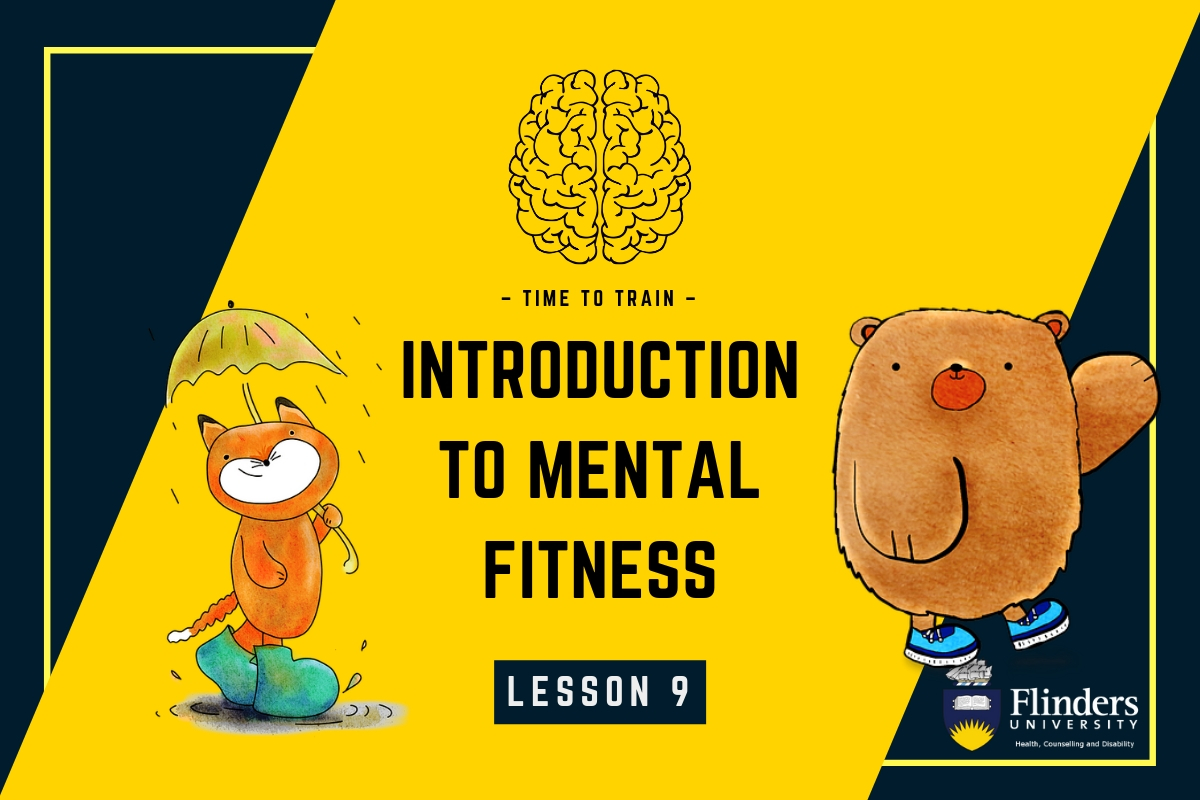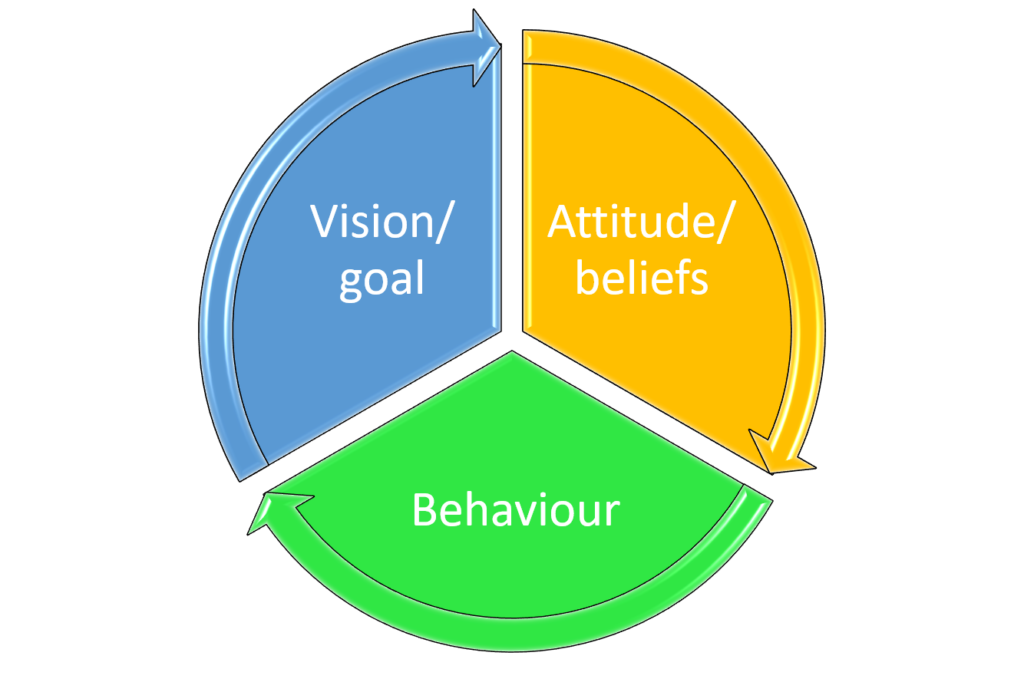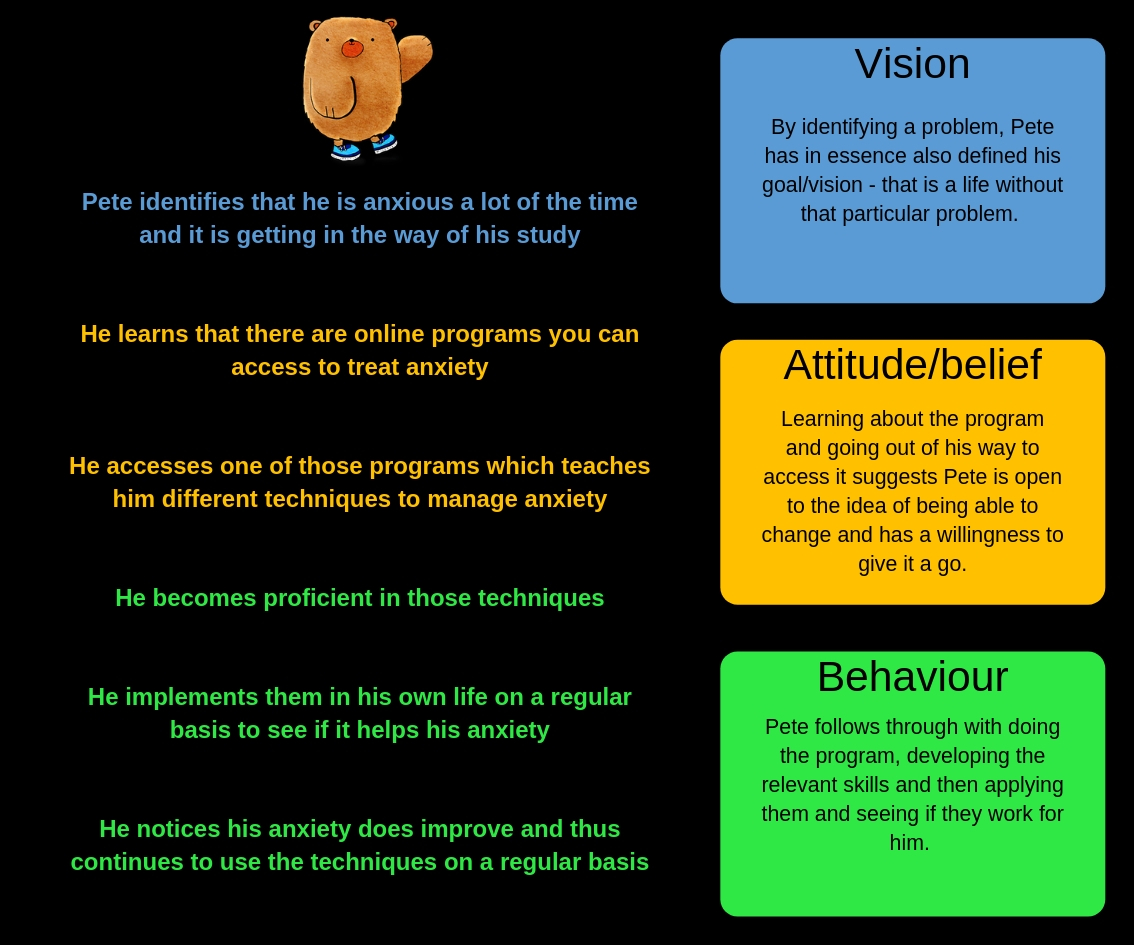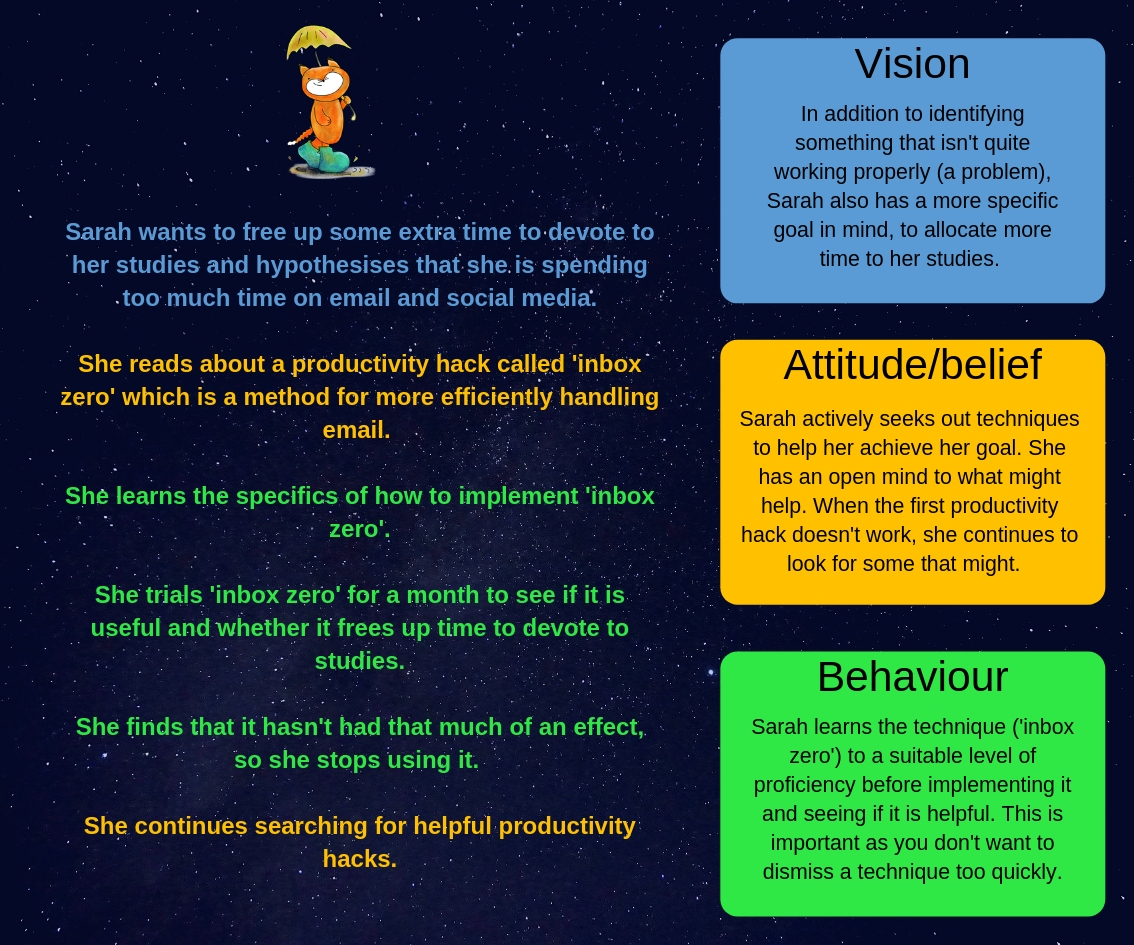
Greetings and welcome to Lesson 9 of my ‘Introduction to Mental Fitness’ course. If you are new to the course, check out the introductory post first.
Greetings!
Welcome to Lesson 9 of the Introduction to Mental Fitness Course.
In the last lesson I said there have to be 3 conditions in place for you to successfully build mental fitness.
They were summarised in this terrible piece of Powerpoint art.

Basically, in order to build or maintain mental fitness you have to:
- have some kind of goal or vision that you are working towards that require your mind to be operating at its best (the blue bit)
- have a positive attitude towards the concept of being able to improve yourself psychologically (the yellowy-orange bit)
- be able to translate any knowledge you had gained about improving your psychological functioning into regular habits (the green bit)
The problem is this all sounds a bit nebulous.
In this post I want to provide some concrete examples of what building mental fitness might look like in real-life.
I’ve picked two examples reflecting two very broad scenarios in which I think mental fitness training has a place.
- Coping with adversity – I’d love to tell you that your life will be one constant positive event after another with no challenges or shitty things happening. However it isn’t true and you know it isnt true. Mental fitness as a concept shares a lot with the term ‘resilience’ which is the capacity to recover from adversity. One of the key reasons to focus on mental fitness is so you have mental resources to draw on during difficult times.
- Room for growth – Being at uni means you are in one of the most potent periods of growth in your life. You are learning new things that might (probably will) be central to your working life. Mental fitness means taking full advantage of those opportunities – seeing and embracing the opportunities for personal growth.
I’ve tried annotating each example to show the different components described above: vision/goal, attitude/beliefs, behaviour.
Example 1 – coping with adversity
In this example, Pete (a weird looking bear) is dealing with anxiety and its impacts on his study.
The example shows the different conditions in action, from Pete identifying his anxiety and its impacts on his study (the beginnings of his vision/goal) to him implementing some anxiety management techniques he learns from an online course (behaviour).

In this example, Pete’s choice of strategy works out well. He learns new skills that become part of his ongoing psychological toolkit.
Example 2 – desire for growth/improvement
In this example, Sarah (a fox with fancy shoes and an umbrella) is looking to free up more time to study, by reducing time spent on email and social media.
Sarah’s example similarly shows the different conditions in action. She wants to free up time to study (vision/goal), has an open mind to using some productivity hacks (attitude/belief) and then experiments with a particular productivity hack to see if it helps her achieve her goal (behaviour).

In this example, Sarah’s initial strategy doesn’t help, but she absorbs that disappointment and continues her exploration into productivity hacks.
Take home message
What these examples are intended to show is that building mental fitness is not necessarily some super complex, time consuming process.
It is instead the mindful implementation of new ways of thinking or behaving that seek to achieve positive psychological outcomes.
Those new ways of thinking or behaving might be quite small (e.g. a productivity hack) or quite big (e.g. doing an online CBT course). It is not the magnitude of the change, per se, that is important. It is the fact you are making the change mindfully and willingly in the service of achieving some kind of positive psychological outcome. You are taking charge of some aspect of your psychological life to make it better.
When it is put this way, it might end up coming across as overly simplistic. “Gareth, are you really telling me that the secret to life is making small irrelevant changes to my study habits??”
The answer to that question is “Yes, kind of”. You build physical fitness by accumulating physical activity over time. You build mental fitness by acucmulating new ways of thinking and behaving over time. The more you practice making changes to the way you think or behave (which will mean a few irrelevant choices along the way), the better you get at it, and the more likely you will be to choose appropriate and beneficial changes.
Reflection Questions
What small changes to your life have you experimented with recently?
If you can think of some, what motivated you to make those changes? How long did you trial the change for? Did you end up making the change a permanent thing?
Was the change made with your psychological or mental health as a focus?
If you were successful, what do you think helped the most in making the change?
Suggested Tasks
If you’ve been following along with the suggested tasks of previous lessons, then you’ll have a notebook or electronic document in which you are completing these tasks.
From the last lesson you will have a sub-heading called ‘Goals’ under which you’ve noted a couple of skill areas you are interested in developing further. They came from this list.
Today the goal is to try and come up with one small lifestyle change you could try making as a working example over the next few lessons, as we break down the process of putting mental fitness into action. Try to pick a lifestyle change that is consistent with the skill areas you were interested in. For example if ‘caring for your body’ was a skill area you were interested in, you might pick ‘go for a 10 minute walk each day’.
You see, over the next few lessons, we are going to go in a little deeper on a mental fitness example, like the ones presented in this lesson. If you’ve got a small lifestyle project you can focus on during these lessons, it will help drive home the process.
I’m going to be using the example of ‘spend more time using my standing desk‘ as my working project. I already do a couple of hours per day at my standing desk, but I am interested in increasing that dramatically. I’ll be trying to use some mental fitness principles to increase my standing desk time.

